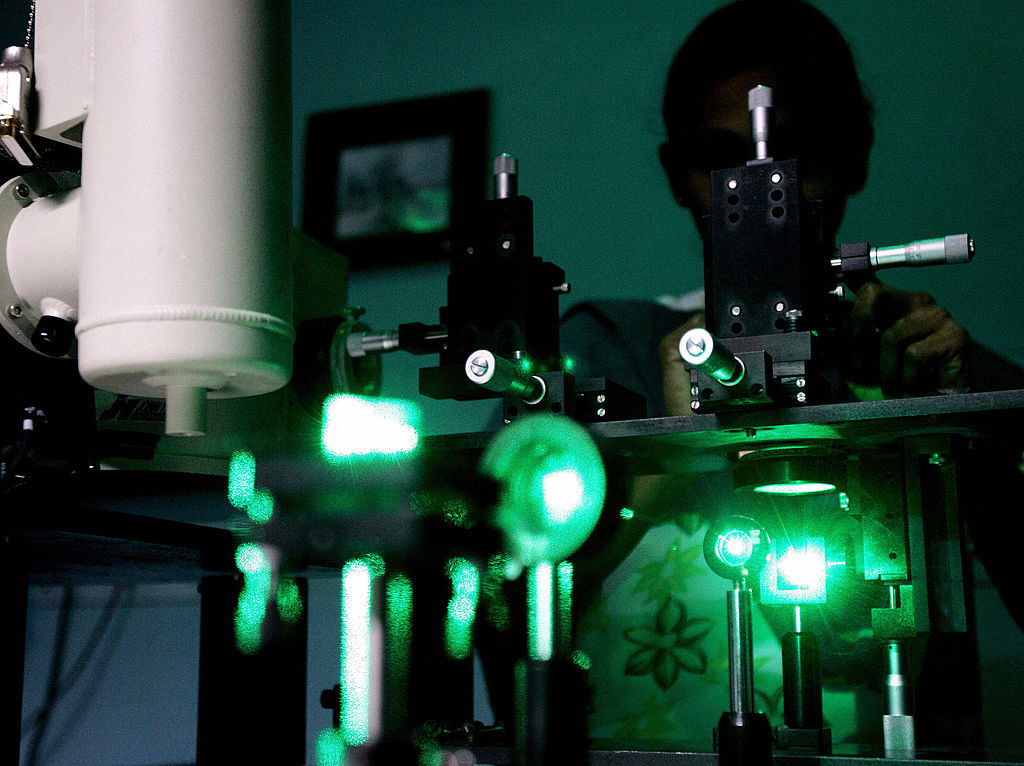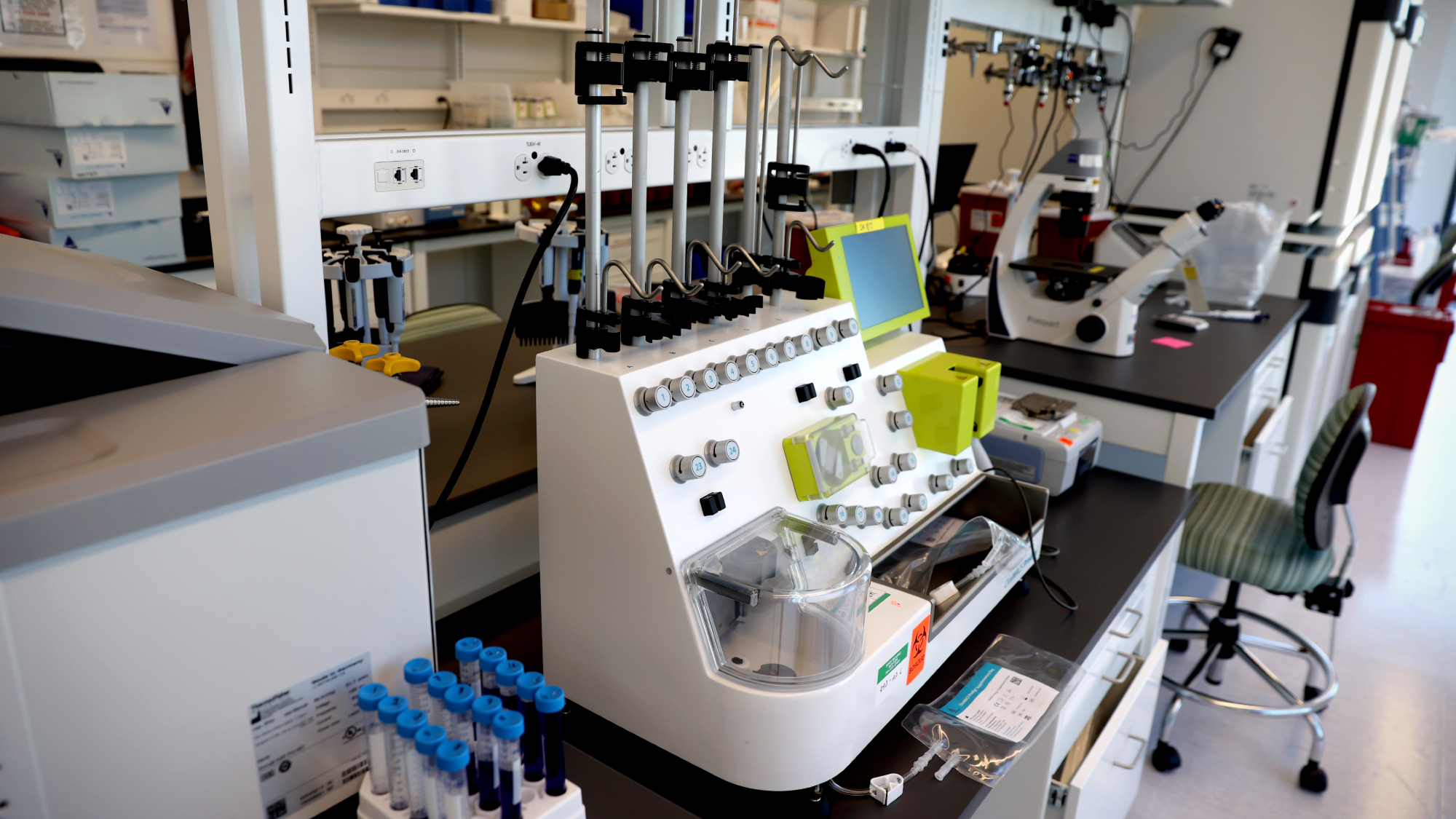Scientists just created a light that is 1 billion times as bright as the sun


A million suns isn't cool. You know what's cool? A billion suns. Physicists from the University of Nebraska's aptly-named Extreme Light Laboratory have just made the brightest light ever produced on Earth, and it is one billion times brighter than the surface of the sun, Phys.org reports.
The super bright laser beam is helping researchers understand how light and matter interact. When light from a regular bulb or the sun strikes a surface, it "scatters," which is what allows us to see. In everyday circumstances, an electron scatters just a couple photons of light at a time, but with the University of Nebraska's laser, almost 1,000 photons scatter at once.
"It's as if things appear differently as you turn up the brightness of the light, which is not something you normally would experience," said the University of Nebraska's Donald Umstadter. "[An object] normally becomes brighter, but otherwise, it looks just like it did with a lower light level. But here, the light is changing [the object's] appearance. The light's coming off at different angles, with different colors, depending on how bright it is."
Subscribe to The Week
Escape your echo chamber. Get the facts behind the news, plus analysis from multiple perspectives.

Sign up for The Week's Free Newsletters
From our morning news briefing to a weekly Good News Newsletter, get the best of The Week delivered directly to your inbox.
From our morning news briefing to a weekly Good News Newsletter, get the best of The Week delivered directly to your inbox.
In one example, the scientists were able to create a high-resolution X-ray of a USB drive, photographing interior details that aren't able to be seen with regular X-rays. Understanding the phenomenon could help scientists find more sophisticated ways to "hunt for tumors or microfractures that elude conventional X-rays, map the molecular landscapes of nanoscopic materials now finding their way into semiconductor technology, or detect increasingly sophisticated threats at security checkpoints," Phys.org writes. "Atomic and molecular physicists could also employ the X-ray as a form of ultrafast camera to capture snapshots of electron motion or chemical reactions."
Read more about the Extreme Light Laboratory and its findings at Phys.org.
A free daily email with the biggest news stories of the day – and the best features from TheWeek.com
Jeva Lange was the executive editor at TheWeek.com. She formerly served as The Week's deputy editor and culture critic. She is also a contributor to Screen Slate, and her writing has appeared in The New York Daily News, The Awl, Vice, and Gothamist, among other publications. Jeva lives in New York City. Follow her on Twitter.
-
 6 lush homes in the trees
6 lush homes in the treesFeature Featuring a glass house in Texas and a home built for a Broncos quarterback in Colorado
-
 7 travel fragrances that let you smell good on the go
7 travel fragrances that let you smell good on the goThe Week Recommends Spritz away!
-
 Third judge rejects DOJ's Epstein records request
Third judge rejects DOJ's Epstein records requestSpeed Read Judge Richard Berman was the third and final federal judge to reject DOJ petitions to unseal Epstein-related grand jury material
-
 Rabbits with 'horns' sighted across Colorado
Rabbits with 'horns' sighted across Coloradospeed read These creatures are infected with the 'mostly harmless' Shope papilloma virus
-
 Lithium shows promise in Alzheimer's study
Lithium shows promise in Alzheimer's studySpeed Read Potential new treatments could use small amounts of the common metal
-
 Scientists discover cause of massive sea star die-off
Scientists discover cause of massive sea star die-offSpeed Read A bacteria related to cholera has been found responsible for the deaths of more than 5 billion sea stars
-
 'Thriving' ecosystem found 30,000 feet undersea
'Thriving' ecosystem found 30,000 feet underseaSpeed Read Researchers discovered communities of creatures living in frigid, pitch-black waters under high pressure
-
 New York plans first nuclear plant in 36 years
New York plans first nuclear plant in 36 yearsSpeed Read The plant, to be constructed somewhere in upstate New York, will produce enough energy to power a million homes
-
 Dehorning rhinos sharply cuts poaching, study finds
Dehorning rhinos sharply cuts poaching, study findsSpeed Read The painless procedure may be an effective way to reduce the widespread poaching of rhinoceroses
-
 Breakthrough gene-editing treatment saves baby
Breakthrough gene-editing treatment saves babyspeed read KJ Muldoon was healed from a rare genetic condition
-
 Sea lion proves animals can keep a beat
Sea lion proves animals can keep a beatspeed read A sea lion named Ronan beat a group of college students in a rhythmic dance-off, says new study
